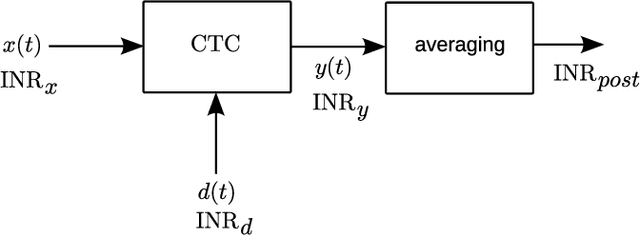R. M. Buehrer
Coherent Time-Domain Canceling of Interference for Radio Astronomy
Aug 08, 2022



Abstract:Radio astronomy is vulnerable to interference from a variety of anthropogenic sources. Among the many strategies for mitigation of this interference is coherent time-domain canceling (CTC), which ideally allows one to "look through" interference, as opposed to avoiding the interference or deleting the afflicted data. However, CTC is difficult to implement, not well understood, and at present this strategy is not in regular use at any major radio telescope. This paper presents a review of CTC including a new comprehensive study of the capabilities and limitations of CTC using metrics relevant to radio astronomy, including fraction of interference power removed and increase in noise. This work is motivated by the emergence of a new generation of communications systems which pose a significantly increased threat to radio astronomy and which may overwhelm mitigation methods now in place.
Adversarial Multi-Player Bandits for Cognitive Radar Networks
Oct 22, 2021



Abstract:We model a radar network as an adversarial bandit problem, where the environment pre-selects reward sequences for each of several actions available to the network. This excludes environments which vary rewards in response to the learner's actions. Adversarial environments include those with third party emitters which enter and exit the environment according to some criteria which does not depend on the radar network. The network consists of several independent radar nodes, which attempt to attain the highest possible SINR in each of many time steps. We show that in such an environment, simple sub-band selection algorithms are unable to consistently attain high SINR. However, through the use of adversarial multi-player bandit algorithms, a radar network can continue to track targets without a loss in tracking precision.
 Add to Chrome
Add to Chrome Add to Firefox
Add to Firefox Add to Edge
Add to Edge